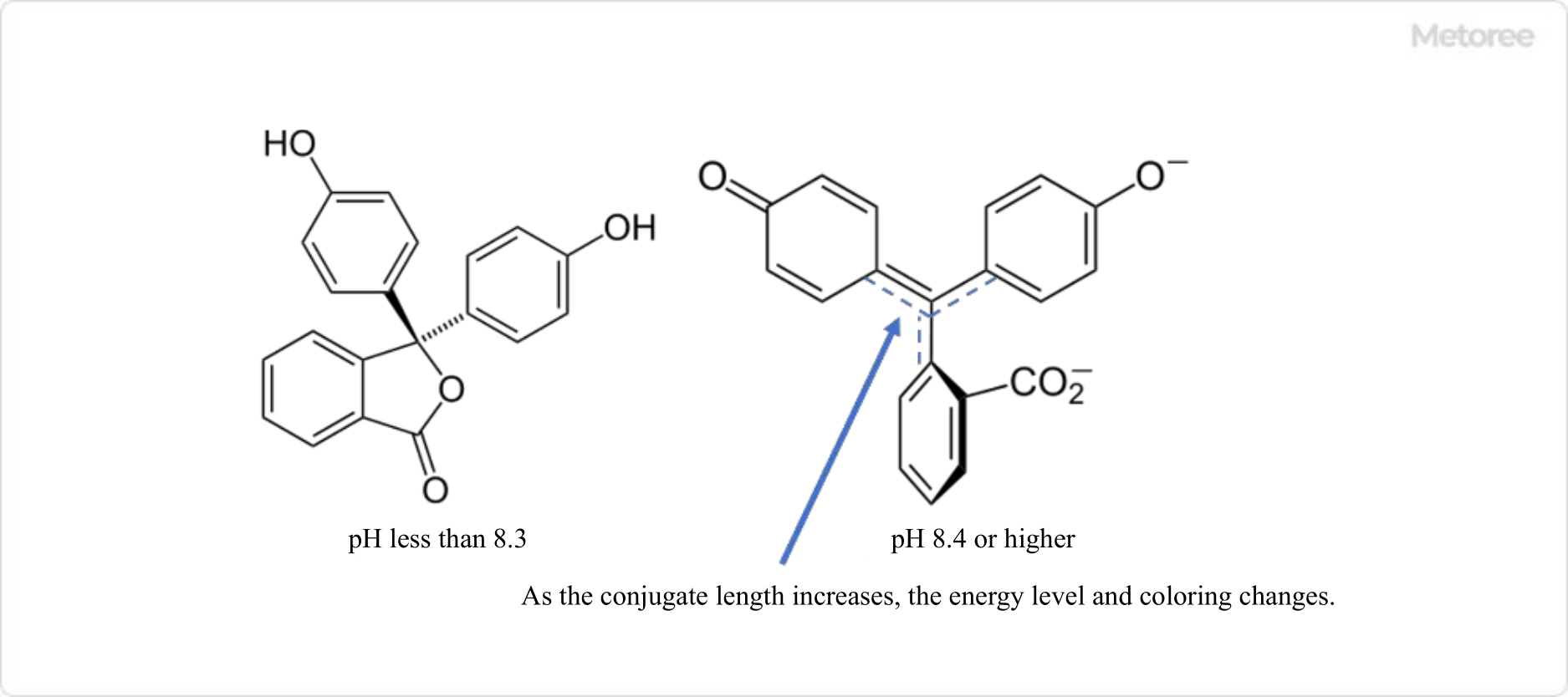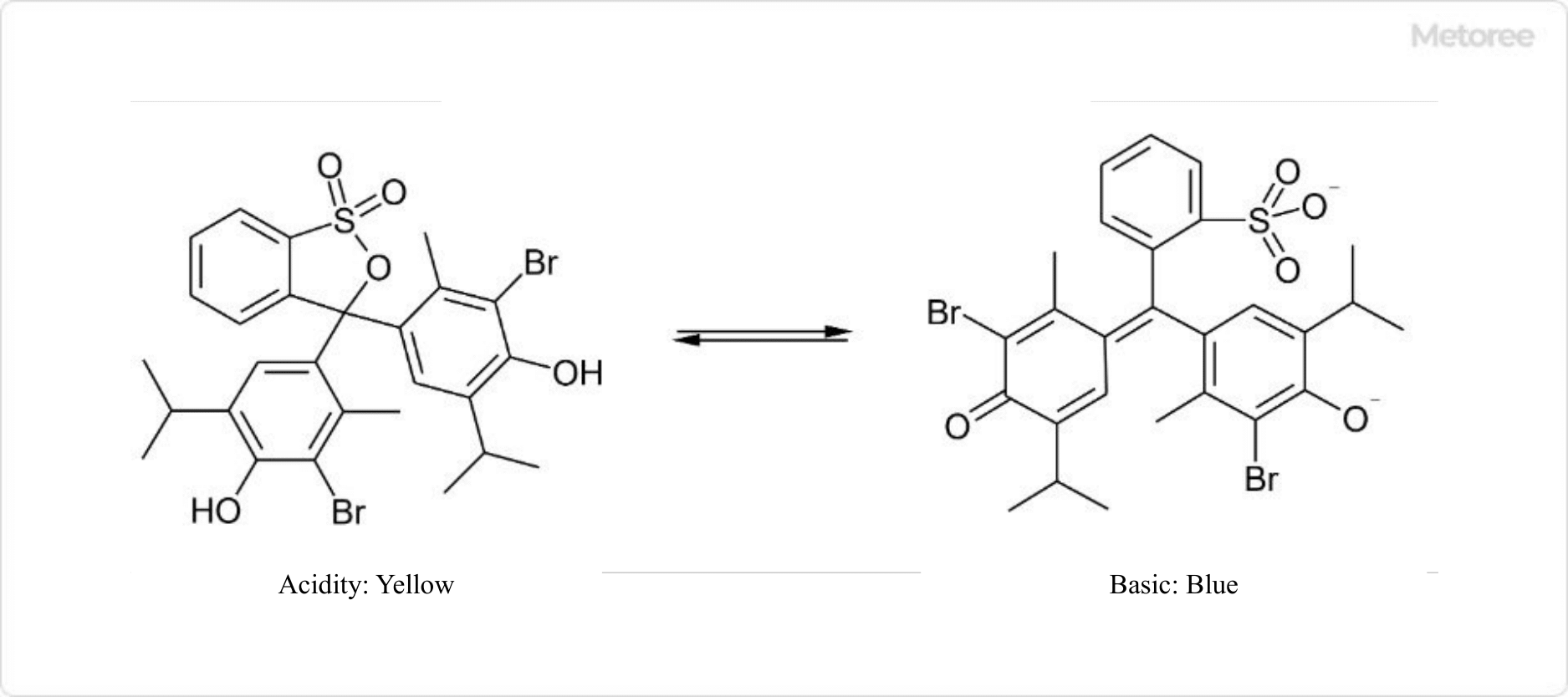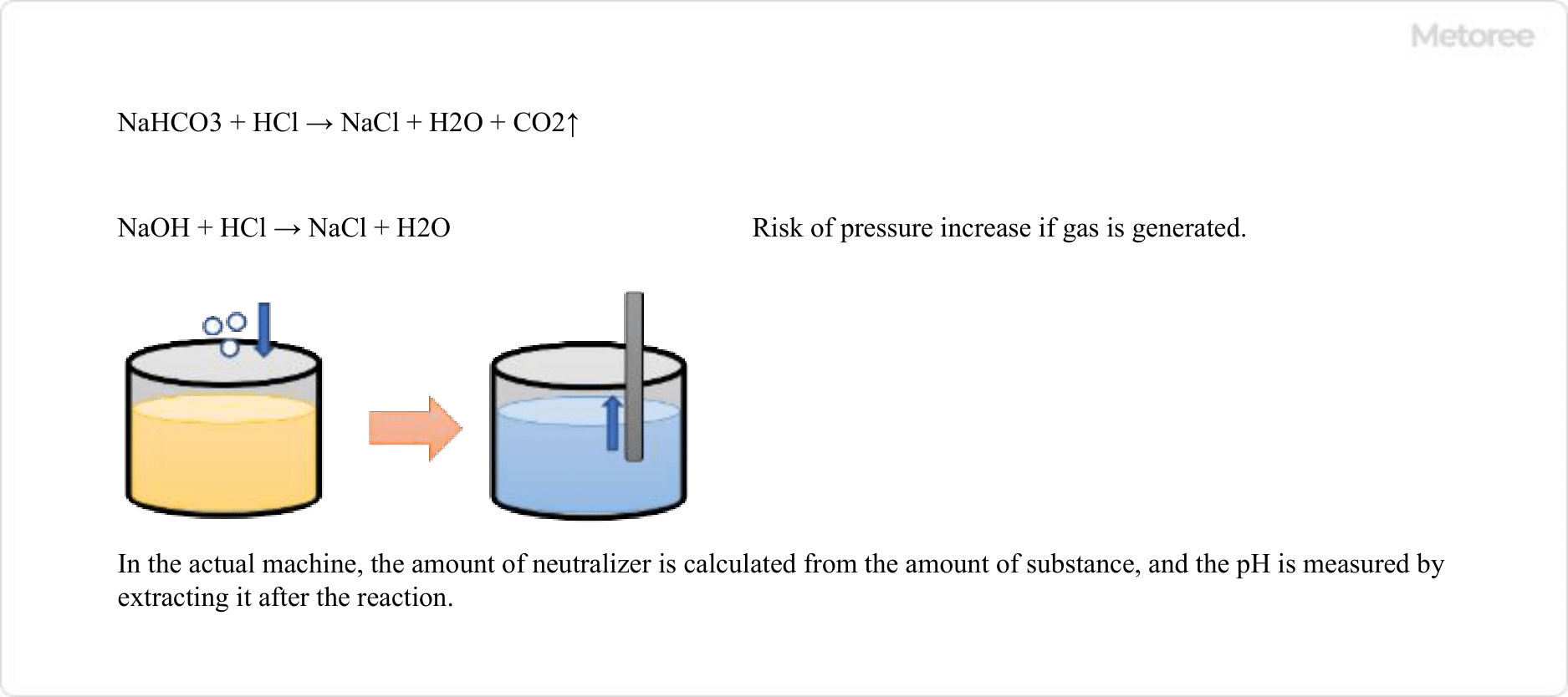All Categories
History










This section provides an overview for ph indicators as well as their applications and principles. Also, please take a look at the list of 11 ph indicator manufacturers and their company rankings. Here are the top-ranked ph indicator companies as of December, 2025: 1.KANTO CHEMICAL CO.,INC., 2.Johnson Test Papers Ltd, 3.Kishida Chemical Co.,Ltd..
Table of Contents
Categories Related to pH Indicators
A pH indicator is a generic term for organic dyes that change color with changes in pH. They are also called acid-base indicators or neutralizing indicators. The pH at which the reaction that changes the structure of the indicator occurs differs depending on the indicator. Therefore, it is important to select an indicator that matches the pH range to be checked. Phenolphthalein, which changes colors in basic solutions, is a typical pH indicator.
Most pH indicators are often used in R&D and production in the manufacturing industry and are also used to check the pH of crops and soil. In addition, pH indicators have long been used in school education, such as science classes, because of their large color change and ease of use.
Since pH indicators can easily determine the pH of a sample solution, they are widely used, especially in analytical applications. For example, in the manufacturing industry, they are often used at production sites to check the neutralization point or to check the pH of wastewater. In particular, the pH range of wastewater discharged from factories to the sewage system is set by the government, so pH control of the wastewater is essential.
In addition, it is sometimes used to check the pH of soil and food in agriculture. In particular, pH measurement is extremely important for stable crop growth because soil pH has a significant impact on how crops grow, and the optimal pH varies depending on the crop and the original pH of the soil in different regions.
The color of the pH indicators changes because the chemical structure of the pH indicators changes with changes in pH. The change in the aromatic ring and the position of the double bond changes the energy state of the molecule (HOMO and LUMO energies), resulting in a change in the wavelength of the light absorbed.

Figure 1. Structural changes in BTB
BTB solution (bromothymol blue) is used for pH indicators to distinguish between acid and base because the color of BTB varies greatly among acidic, neutral, and basic solutions. Strictly speaking, BTB is acidic, so the chemical structure of commercial products is sodium salt.
When the pH of a BTB solution is less than 6.0, almost all BTB forms a salt with sodium, but when the pH is greater than 7.6, the proton of the hydroxy group of BTB is also desorbed to form a divalent anion. This structural change results in a color change: yellow for pH less than 6.0, blue for pH greater than 7.6, and green for pH in between, which is a superposition of the colors of the two compounds.

Figure 2. Structural changes in phenolphthalein
Phenolphthalein solution in pH indicators is used to identify basic solutions. It is often used in school science experiments because of its easily recognizable purple coloration.
Phenolphthalein is a white solid substance that is soluble in ethanol and water. Phenolphthalein solutions in neutral or acidic environments are clear, but when the pH exceeds 9, the ether moiety cleaves and changes to an anion, turning the solution purple. On the other hand, above pH 10, phenolphthalein undergoes further structural changes, and above pH 13, the purple solution returns to clear and colorless.

Figure 3. pH indicator use in the manufacturing industry
The pH of wastewater that can be discharged into the sewage system by businesses is set by each municipality and must be neutral. In cases where the amount of wastewater used is small, such as in laboratories and R&D, a weak base such as sodium bicarbonate is used as a neutralizing agent, and pH indicators, which change color near neutral, are added to the wastewater to check its pH.
However, neutralization using sodium bicarbonate generates carbon dioxide gas, which in some cases cannot be used at production sites on large scales. In such cases, neutralization may be performed using a base or acid such as hydrochloric acid or sodium hydroxide that does not generate gas.
Since the indicator cannot be added directly to the wastewater at the production site, the wastewater is sampled after treatment and the indicator is added to check the pH level.
In agriculture, soil pH is controlled due to its significant impact on crops. In addition, pH confirmation is often required not only for crops but also for a wide range of food products.
For example, for foods that dissolve in water, such as dried soup, pH indicators may be added to the food dissolved in water for simple analysis. For solid foods such as meat and fish, a pH measuring instrument using an electrode is used instead of pH indicators.
*Including some distributors, etc.
Sort by Features
Sort by Area

Hach Company, a subsidiary of Danaher Corporation (DHR), is an American manufacturer established in 1933 and headquartered in Loveland, Colorado, specializing in analytical instruments and reagents for testing water quality and other liquid solutions. Hach offers a diverse range of products, including chemicals, laboratory equipment and supplies, as well as portable and digital (online) instruments. Specific instruments like spectrophotometers, turbidimeters, and colorimeters are also available. These products are used for various applications, for example in analyzing industrial water to reduce fresh water consumption and validate contaminant removal, and monitoring nutrient for long-term water health using the Real Time Control (RTC) system.

Chemical Store Inc. is a Clifton, New Jersey-based chemical manufacturer and supplier that ships worldwide. The company has a division known as the Rosin Factory, which handles the production of its rosin, dried pine resin, products. Chemical Store’s products further range from salts, acids, and metal powders to waxes and lab supplies. The company’s customer base is varied, serving manufacturers, schools, hobbyists, and research laboratories. It provides several compliance certificates, such as Kosher, gluten-free, Non-GMO, vegan, and organic certificates for its products upon request.

Kanto Chemical Co. Inc., founded in 1944 and headquartered in Tokyo, Japan, is a reagent manufacturer with overseas affiliates in other countries, including China, France, USA, Taiwan, and Malaysia. Its product portfolio includes analytical reagents, ionic liquids, Iodine compounds, ultra-pure chemicals, and water analysis kits. The company is also developing regenerative medicine and genetics reagents and has over 50,000 products. It has several certifications, including ISO 9001, acquired in 1994, making it the first Japanese company in the reagent industry. Other certifications are ISO 14001, ISO 13485, and ISO/IEC 17025.

Kishida Chemical Co. Ltd., established in 1924 and headquartered in Osaka, Japan, is a manufacturer of reagents and high-purity chemicals and also does drug discovery support activities. Its product portfolio includes fine chemicals, research chemicals, ionic liquid, organic micro-analytical reagents, and chemical reagents for analysis. The products support several industries, including reagent business, battery material, drug discovery, and life science. The company is ISO 14001 certified and supplies several companies worldwide, including Meterion Advanced Chemicals Inc., Acros Organics, ChemBridge Corporation, Decon Laboratories, and InerBioScreen Ltd.

Johnson Test Papers Ltd. is a British manufacturer of impregnated paper testing products, and was established in 1938 in Oldbury, England. The company’s products include semi-quantitative test strips for measuring the concentration of a substance in solution, pH testing strips, qualitative testing strips for determining the presence or absence of chemical substances, and humidity testing strips for measuring relative moisture or humidity in materials or environments. The company also provides OEM, private label, and research and development services for its clients.

Loba Chemie Pvt. Ltd. is a Mumbai-based manufacturer and supplier of laboratory and fine chemicals, catering to industries such as pharmaceuticals, food, research, hospitals, and universities since its establishment in 1975. Their product range includes pH indicators, biological stains, HPLC solvents, high purity acids, and tetrazolium salts and derivatives. These products serve various applications like pH testing, cell and tissue staining, chemical separation, and pharmaceutical manufacturing. The company has several certifications, such as ISO/IEC 17025:2017 and ISO 9001:2015.

GSP Chemical Industries is an Indian manufacturer of pH indicators and color changing compounds established in 1981 and based in Palghar, Maharashtra. The company produces a wide range of biological stains, pH indicators, halochromes, and lab reagents as well as dye intermediates. These include nitroso salt, nile blue chloride, pan indicators, wright stains, and custom pH indicators for industry-specific applications. The company’s products are primarily used in pathological and analytical laboratories in India, but also have applications in the dye and pigment manufacturing sectors.

Merck, started in 1668 and based in Darmstadt, Germany, is a supplier of solutions and services for research, development, and manufacture of pharmaceutical and biotechnological drug therapies. The company serves the life science industry and has a broad portfolio of 300,000 products, including biopharmaceutical manufacturing, industrial microbiology, reagent, life science research, and water purification products. It is available in 66 countries, brings together six brands, and has several ISO certifications, including ISO 13485, ISO 14001, ISO 13485, and ISO 50001.

Micro Essential Laboratory Inc. is an American pH and sanitizer test paper products manufacturer that was established in Brooklyn, New York in 1934. The company primarily produces sanitizer test papers for determining the strength or concentration of select chemicals in a solution, pH test papers for indicating the alkalinity or acidity of solutions, and pH buffer standards for calibrating pH meters as well as electrodes. It also offers customized test paper products for unique projects or use cases. The company’s products are used mainly by clients in the healthcare, food service, industrial processing, and consumer goods sectors.

Millipore Sigma, formerly known as Sigma-Aldrich, was created in 175 through the merger of Sigma Chemical Company and Aldrich Chemical company and today is a subsidiary of Merck. Millipore Sigma is a life science and biotechnology company serving the industry with several products and services. Some of their product categories include peptide synthesis materials, biochemicals, building blocks, catalysts, chemical biology, chemical synthesis, flavors & fragrances, formulation, lab chemicals, lab safety, APIs, and stable isotopes. Services include characterization, contract manufacturing, custom products, software, support, testing, and mRNA development & manufacturing.
Lab Filtration Papers is a laboratory paper materials distribution company and online shop based in North America specializing in the distribution of Ahlstrom-Munksjö scientific products. The company’s product portfolio includes filter papers, wall liners, beverage filter media, and specialty labels used in various industries, including laboratories, scientific research, manufacturing, and more. The company also offers custom solutions with options to deliver Ahlstrom-Munksjö papers in special sheet, roll, or die-cut sizes. With a focus on personalized service and support, Lab Filtration Papers offers comprehensive technical information on Ahlstrom-Munksjö materials and personalized support to meet diverse client requirements.
Ranking as of December 2025
Derivation Method| Rank | Company | Click Share |
|---|---|---|
| 1 | KANTO CHEMICAL CO.,INC. |
13.6%
|
| 2 | Johnson Test Papers Ltd |
11.9%
|
| 3 | Kishida Chemical Co.,Ltd. |
11.9%
|
| 4 | Micro Essential Laboratory Inc. |
10.2%
|
| 5 | LobaChemie Pct.Ltd. |
10.2%
|
| 6 | GSP Chemical Industries |
8.5%
|
| 7 | Hach Company |
8.5%
|
| 8 | Lab Filtration Papers |
6.8%
|
| 9 | Chemical Store Inc. |
6.8%
|
| 10 | Merck |
6.8%
|
Derivation Method
The ranking is calculated based on the click share within the ph indicator page as of December 2025. Click share is defined as the total number of clicks for all companies during the period divided by the number of clicks for each company.Number of Employees
Newly Established Company
Company with a History
*Including some distributors, etc.
*Including some distributors, etc.
| Country | Number of Companies | Share (%) |
|---|---|---|
 United States of America
United States of America
|
2 | 28.6% |
 Japan
Japan
|
2 | 28.6% |
 India
India
|
2 | 28.6% |
 United Kingdom
United Kingdom
|
1 | 14.3% |
11 products found
11 products
Yagyu Shokai Co., Ltd.
390+ people viewing
Last viewed: 1 day ago